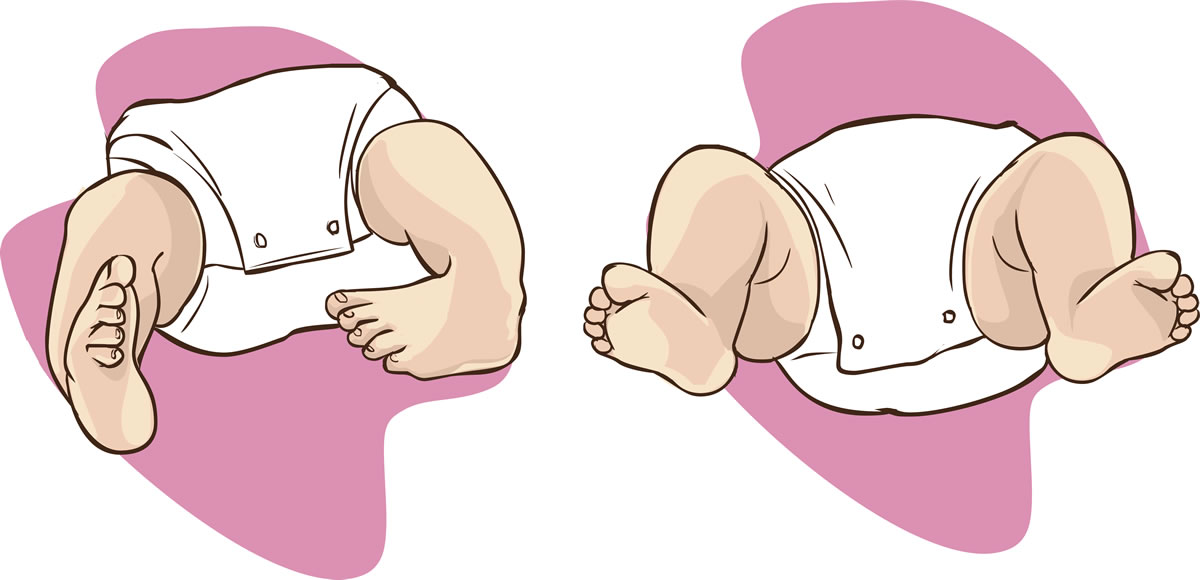Clubfoot - CTEV
Clubfeet is a birth defect where one or both feet are rotated inward and downward, at the ankle joint. It is generally common in both feet, but occasionally it may affect only one foot.
Disruption of the muscles or connective tissue of the lower leg, lead to joint contracture.

Epidemiology
Clubfoot is a fairly common congenital disorder with incidence of 1 in 1000 births.
Clubfoot disproportionally affects those in low and middle-income countries. Clubfoot is more common in firstborn children and males.
Causes
Both genetic and environmental factors are believed to be involved.
Cause may be idiopathic or secondary.
Signs and Symptoms
- Feet are rotated inward and downward.
- The affected leg or foot may be slightly shorter.
- The calf muscles in the affected leg are usually underdeveloped.
- Tightness of calf muscles.
- Difficulty in walking.
Diagnosis
- Physical Examination
- X rays (Occasionally)
- Ultrasonography (sometimes may be used to detect clubfoot prior to birth, and can allow parents to know the condition well and plan treatment well ahead)
Complications
- Limited Mobility
- Lack of Flexibility
- Foot Pain
- Difficulty in Walking
- Abnormal Walking Pattern
- Unnatural growth of calf muscles due to abnormal walking patterns, can cause large sores or calluses on the foot.
- Poor Self Image
- Arthritis
Treatment
- Postural CTEV: It is generally self resolving, only few cases may require physiotherapy intervention for stretching and stimulation.
- Structural CTEV: Serial Casting and manipulation is required like in the “Ponseti method”.
First manipulation is done to align the foot in the correct position, cast is given to maintain the alignment.
Series of castings are repeated for gradual correction.
Achilles tendon release - Then Achilles tendon muscle is released under local anaesthesia and sedation. This helps in acquiring a fully correct position, then again a long leg cast is applied to maintain the position.
Brace application - Finally, a brace is applied to prevent the foot from returning to its deformed position for a few years of the child.
Occasionally, minimal surgery may be required, which is usually done in the 9 to 12 months of age and the goal is to correct all the deformities. In the surgery, the orthopaedic surgeon may lengthen or reposition tendons and ligaments to help ease the foot into a better position.
Earlier the treatment is done, the results are better. Hence, early diagnosis and management is important.
To know more kindly contact the best orthopaedic surgeon Dr. Rahul Modi for further queries.
This surgery is frequently performed by the best orthopaedic surgeon Dr. Rahul Modi for treating Clubfoot - CTEV.